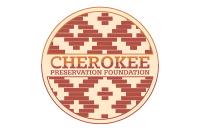Beyond blueberries: Backyard cornucopia revealed at native plants conference
 Taking a walk with Ila Hatter is the outdoors equivalent of sitting beside a scrapbooker as she pages through the family photo album. Every step is a story, a meeting with a plant bearing its own history and its own place in the present.
Taking a walk with Ila Hatter is the outdoors equivalent of sitting beside a scrapbooker as she pages through the family photo album. Every step is a story, a meeting with a plant bearing its own history and its own place in the present.
“I think stories help you remember,” Hatter said. “They give you something to hold onto as you’re learning plants.”
Blooms in the southern mountains
Each July since 1991, I’ve led field trips along the Blue Ridge Parkway offered as part of the Native Plants Conference sponsored by Western Carolina University. This year’s outings (July 25) will have taken place by the time you read this.
Between Waterrock Knob and Mt. Pisgah, the eight participants in my group will identify perhaps eight fern species, several grasses, a few lichens, maybe a mushroom or two, and more than 100 wildflower species, including wild quinine, large-flowered leafcup, bush honeysuckle, green wood orchis, starry campion, Indian paintbrush, enchanter’s nightshade, Small’s beardtongue, downy skullcap, tall delphenium, pale Indian plantain, tall bellflower, southern harebell, horsebalm, round-leaved sundew, Blue Ridge St. Johnswort and false asphodel.
No group of flowering plants along the Parkway, however, will be of more interest to participants than the “Monardas,” a genus in the mint family that includes the ever-popular bee balm. There are two other distinct “Monarda” species — wild bergamot and basil balm — that appear in this section of the Southern Blue Ridge Province in addition to a hybrid backcross called purple bergamont.
“Monardas” are sometimes called horsemints because “horse” signifies “large” or “coarse,” and the members of this genus are generally larger, coarser plants than many other members of the mint family. In this instance “coarse is beautiful.” Most of the horsemints have quite appropriately been introduced into cultivation.
Here’s a checklist of those three horsemint species and the hybrid found in the Western North Carolina mountains. All flower from mid-June into September and can be readily located along the parkway, especially in the areas of the Grassy Ridge Mine (milepost 436.8) and Standing Rock Overlook (milepost 441.4).
• Bee balm, also called crimson bee balm or Oswego tea (Monarda didyma): occasional in moist, shaded situations; adapted by scarlet color long tubular shape of flowers for pollination by hummingbirds, but often “robbed” by bees and other insects that bore “bungholes” at the base of the corolla tube; note the reddish leaf-like bracts just below the flowers; called “bee balm” because it made a poultice that soothed stings; sometimes called Oswego tea because of its use as a steeped medicinal by the Oswego Indians of New York; generic name honors an European botanist, Nicholas Monarda, who had an interest in medically useful plants from the New World. No red flower — save, of course, cardinal flower — is more resplendent. And like cardinal flower, this member of the mint family often haunts a lush and dark setting so that when it catches slanting light the flaming crimson gleams like a beacon.
• Wild bergamot (M. fistulosa): common but variable species flowering in open fields, meadows, and on dry wooded slopes; petals are usually lilac or pinkish-purple (rarely white) with the upper lip bearded at the apex; bracts often pink-tinged; frequently visited by butterflies; oil with an odor resembling essence of bergamot was once extracted from the plant to treat respiratory ailments; brewed as tea by the Cherokee for many ailments, including flatulence and hysterics.
• Basil balm (M. clinopodia): occasional in both moist and dry woods and thickets; similar to wild bergamot but with paler pink or white flowers that have purple spots on lower lip and whitish bracts; common name indicates that it was used like bee balm as a poultice. Wild bergamot and basil balm often interbreed along the parkway.
• Purple bergamot (M. media): an infrequently encountered natural hybrid backcross of the above species displaying deep reddish-purple flowers and dark purple bracts; habitat about the same as bee balm, so look for color differences between scarlet of that species and deep purple for the hybrid; despite the hybrid status it’s reliably distinctive and exciting to encounter.
Note: Excellent colored illustrations of each of these horsemints appear opposite p. 92 of Newcomb’s Wildflower Guide (Boston: Little, Brown and Co., 1977). Dotted horsemint (M. punctata), which has purple-spotted yellow flowers, is primarily a species of the piedmont and coastal plain that does not — to my knowledge — appear in the Southern Blue Ridge Province.
George Ellison wrote the biographical introductions for the reissues of two Appalachian classics: Horace Kephart’s Our Southern Highlanders and James Mooney’s History, Myths, and Sacred Formulas of the Cherokees. In June 2005, a selection of his Back Then columns was published by The History Press in Charleston as Mountain Passages: Natural and Cultural History of Western North Carolina and the Great Smoky Mountains. Readers can contact him at P.O. Box 1262, Bryson City, N.C., 28713, or at This email address is being protected from spambots. You need JavaScript enabled to view it..





